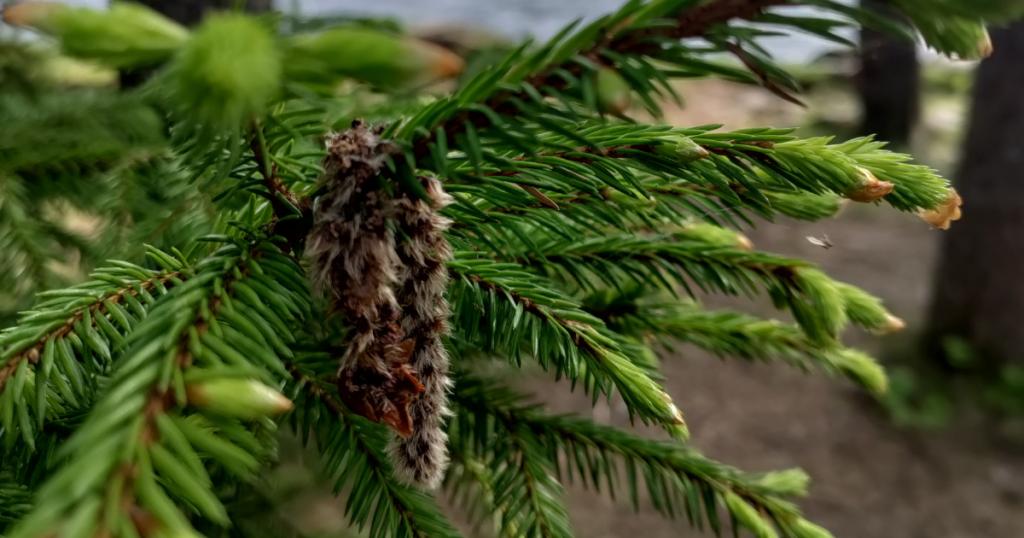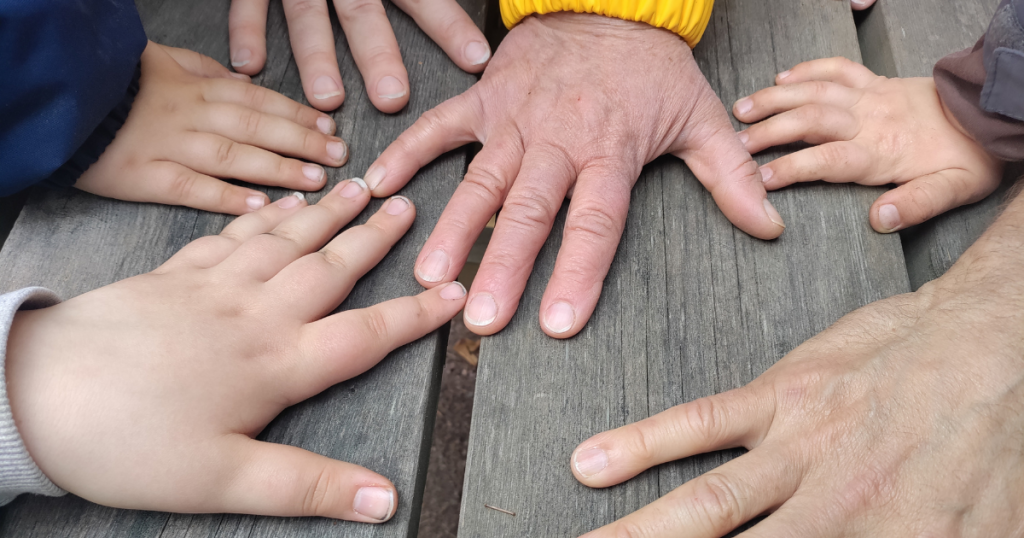“What do I know, really?” – Searching for a Pedagogy of Love
18.11.2025

Text: Aino Häli
I don’t see it coming, but there it is — the realisation hits me as I sit in the small auditorium of Lahti City Theatre during the Yhteiset yleisöt seminar. It lands like lightning.
Just moments before this thunderbolt of clarity, drama pedagogue Lasse Kantola begins his talk. I listen, mouth slightly open with wonder, eyes prickling with tears. To me, it doesn’t feel like a presentation at all. It feels like testimony.
Lasse speaks about his work with upper secondary students at SDO’s Lahti campus, in the community learning environment known as Theatrum Olga. As he talks, I’m captivated — astonished, moved, energised. The methods he uses and the warmth at the very core of his approach to human interaction strike a deep chord.
I’m left wondering how on earth I could ever capture even a pale reflection of the enchantment and comfort his words bring me.
Writing this piece has taken me from the darkness of November to the all-consuming brightness of June. I’ve returned to it many times, only to grow frustrated by the sluggishness of my own thoughts and the clumsiness of my hands, unable to grasp the atmosphere or emotion I want to paint with words. (Still, I promised I would try — and I share this so we can all approach the topic with exactly the right mix of lightness or gravity, whichever feels fitting.)
The Pedagogy of Love in Practice
Kantola explains that the holistic teaching approach used in Olga is known as a pedagogy of love. Guidance is built on compassionate interaction, noticing what is good, and understanding and accepting each learner’s background and circumstances.
From Lasse’s talk, I latch onto the expression guiding someone towards the good. It feels like the very heart of this pedagogy. A genuine encounter, a gentle gaze — especially towards a child or young person — creates space for trying, failing, and growing into oneself.
Often, skill gaps simply mean a person has not been given the teaching or guidance they’ve needed. It’s unreasonable to expect abilities from someone who’s never had the chance to develop them. More often than not, it is the guidance that has been insufficient — not the person who has received it.

The Pedagogy of Love in Theory
After the seminar in Lahti, I look for a theoretical framework and come across the concept of ecotherapeutic self-cultivation, developed by Johanna Kallio, Jani Pulkki, Antti Saari and Tuomas Tervasmäki. They argue that one of the central problems of our time is lovelessness.
Lovelessness drives us to chase quick, instrumental gains. In the pursuit of our own advantage, we abandon the love we might otherwise feel towards other living beings. Our greatest crises — ecological collapse, mass extinction, human distress — all stem from this prevailing lovelessness. As a response, the writers propose a “systematic cultivation of love”: expanding a loving outlook towards all living things.
The human body requires oxygen, water, food, movement and rest. But we also need relationships, play, and creativity — ideally in a community. Without these, we cannot grow in ways natural to our species.
Modern life adds layer upon layer of things we do not need to live or grow. We use them to soothe the hunger for needs that go unmet because they are not profitable within a consumption-driven, performance-heavy system.
We buy a handbag when what we really crave is play. We open a social media app when what we long for is connection. Broken connections get in the way of true play and genuine closeness. And in that unfulfilled longing, we feel disappointment, sadness and loneliness.
A Pedagogy of Love in the Work of Art Testers
I start thinking about constructive encounters and interaction — and especially guiding towards the good — through the lens of Art Testers. As a coordinator, I join many school groups on their art visits throughout the year. I pay attention to the smallest details.
From my observations, a successful visit doesn’t have a simple recipe; it’s more than the sum of its parts.
You need an artwork that speaks to young people, and adults — at school, in the art venue and even on the journey — who are ready and willing to engage. What matters most is that we as professionals create the conditions in which a 14-year-old has the skills and confidence they need to take part. It is our collective responsibility — in our roles and as fellow human beings — to guide young people towards a space where participation becomes possible in the best way for them.
Small gestures matter: meeting someone’s eyes, offering a warm welcome, fostering trust and sharing. These may well be the most important elements in turning an art visit into something closer to sitting around the same campfire.

All is full of love — treat others as you would like to be treated
The ending writes itself. I’m at Kiasma with a group of Art Testers from Pudasjärvi. After the museum tour, I’m washing my hands in front of a large mirror when the person next to me speaks.
Stranger: “Hi, sorry — I have a slightly odd question…”
Me: “Go ahead!”
Stranger: “I’m on my way to a job interview and I’m really nervous. Would you… could you give me a hug?”
Me: “Of course!”
(We hug.)
Me: “People have actually told me I give good hugs — so you might have asked the right person!”
Stranger: “Yeah, that really was a good, warm hug. Thank you.”
Me: “Have a lovely summer, and good luck with the interview.”
Stranger: “Thank you. And you too.”
I walk away feeling warm, almost giddy with softness.
I find myself thinking how important it would be to rebuild trust — in the living world around us and in every person we meet — so that we can truly see one another, smile, and, when needed, offer a hug. I’m moved by how this stranger recognised in me a fellow human they could trust and lean on. I can’t imagine receiving a finer compliment.
Connection and community are how we build a better future.
Art Testers can change the world.
The writer Aino Häli is an arts professional endlessly enthusiastic about fostering children’s and young people’s experiences of participation, as well as the many forms of audience engagement. To get this piece written, she has relied on litres of strong coffee, the woollen socks knitted by her grandmother, and this playlist in her headphones.
Sources
Ekoterapeuttinen itsekasvatus –Tulkinta Erich Frommin rakkauden teoriasta kapitaloseenin ajassa (Johanna Kallio, Jani Pulkki, Antti Saari & Tuomas Tervasmäki [Kasvatus & Aika 16 (3), 25-48] 2022).
Rakkauden pedagogiikan perusteet. Narratiivinen kirjallisuuskatsaus rakkaudesta sitä kasvun ja kasvatuksen näkökulmasta katsoen (Päivi Sillanpää, erityispedagogiikan pro gradu-tutkielma, 24.4.2024 Turku).